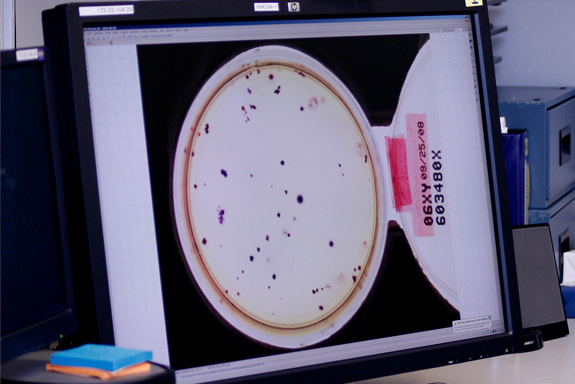Warnings and Precautions
Hypersensitivity Reactions
Allergic reactions may occur with infusion of HPC, Cord Blood, including HEMACORD (HPC, Cord Blood). Reactions include bronchospasm, wheezing,angioedema, pruritus and hives [see Adverse Reactions]. Serious hypersensitivity reactions, including anaphylaxis, also have been reported. These reactions may be due to dimethyl sulfoxide (DMSO), Dextran 40, or a plasma component of HEMACORD (HPC, Cord Blood).
HEMACORD (HPC, Cord Blood) may contain residual antibiotics if the cord blood donor was exposed to antibiotics in utero. Patients with a history of allergic reactions to antibiotics should be monitored for allergic reactions following HEMACORD (HPC, Cord Blood) administration.
Infusion Reactions
Infusion reactions are expected to occur and include nausea, vomiting, fever, rigors or chills, flushing, dyspnea, hypoxemia, chest tightness, hypertension, tachycardia, bradycardia, dysgeusia, hematuria, and mild headache. Premedication with antipyretic, histamine antagonists, and corticosteroids may reduce the incidence and intensity of infusion reactions.
Severe reactions, including respiratory distress, severe bronchospasm, severe bradycardia with heart block or other arrhythmias, cardiac arrest, hypotension, hemolysis, elevated liver enzymes, renal compromise, encephalopathy, loss of consciousness, and seizure also may occur. Many of these reactions are related to the amount of DMSO administered. Minimizing the amount of DMSO administered may reduce the risk of such reactions, although idiosyncratic responses may occur even at DMSO doses thought to be tolerated. The actual amount of DMSO depends on the method of preparation of the product for infusion. Limiting the amount of DMSO infused to no more than 1 gm/kg/day is recommended. If infusing more than one unit of HPC, Cord Blood on the same day, do not administer subsequent units until all signs and symptoms of infusion reactions from the prior unit have resolved.
Infusion reactions may begin within minutes of the start of infusion of HEMACORD® (HPC, Cord Blood), although symptoms may continue to intensify and not peak for several hours after completion of the infusion. Monitor the patient closely during this period. When a reaction occurs, discontinue the infusion and institute supportive care as needed.
Graft-versus-Host Disease
Acute and chronic graft-versus-host disease (GVHD) may occur in patients who have received HEMACORD® (HPC, Cord Blood) Classic acute GVHD is manifested as fever, rash, elevated bilirubin and liver enzymes, and diarrhea. Patients transplanted with HEMACORD® (HPC, Cord Blood) also should receive immunosuppressive drugs to decrease the risk of GVHD.
Engraftment Syndrome
Engraftment syndrome is manifested as unexplained fever and rash in the peri-engraftment period. Patients with engraftment syndrome also may have unexplained weight gain, hypoxemia, and pulmonary infiltrates in the absence of fluid overload or cardiac disease. If untreated, engraftment syndrome may progress to multiorgan failure and death. Begin treatment with corticosteroids once engraftment syndrome is recognized in order to ameliorate the symptoms.
Graft Failure
Primary graft failure, which may be fatal, is defined as failure to achieve an absolute neutrophil count greater than 500/uL blood by Day 42 after transplantation. Immunologic rejection is the primary cause of graft failure. Patients should be monitored for laboratory evidence of hematopoietic recovery. Consider testing for HLA antibodies in order to identify patients who are alloimmunized prior to transplantation and to assist with choosing a unit with a suitable HLA type for the individual patient.
Malignancies of Donor Origin
Patients who have undergone HPC, Cord Blood transplantation may develop post-transplant lymphoproliferative disorder (PTLD), manifested as a lymphoma-like disease favoring non nodal sites. PTLD is usually fatal if not treated. The incidence of PTLD appears to be higher in patients who have received antithymocyte globulin. The etiology is thought to be donor lymphoid cells transformed by Epstein-Barr virus (EBV). Serial monitoring of blood for EBV DNA may be warranted in high-risk groups. Leukemia of donor origin also has been reported in HPC, Cord Blood recipients. The natural history is presumed to be the same as that for de novo leukemia.
Transmission of Serious Infections
Transmission of infectious disease may occur because HEMACORD® (HPC, Cord Blood) is derived from human blood. Disease may be caused by known or unknown infectious agents. Donors are screened for increased risk of infection with human immunodeficiency virus (HIV), human T-cell lymphotropic virus (HTLV), hepatitis B virus (HBV), hepatitis C virus (HCV), T. pallidum, T. cruzi, West Nile Virus (WNV), transmissible spongiform encephalopathy (TSE) agents, and vaccinia. Donors are also screened for clinical evidence of sepsis, and communicable disease risks associated with xenotransplantation. Maternal blood samples are tested for HIV types 1 and 2, HTLV types I and II, HBV, HCV, T. pallidum, WNV, and T. cruzi. These measures do not totally eliminate the risk of transmitting these or other transmissible infectious diseases and disease agents. Report the occurrence of a transmitted infection to the New York Blood Center at 1-866-767-NCBP (1-866-767-6227).
Testing is also performed for evidence of donor infection due to cytomegalovirus (CMV); however, this is not a donor selection criterion. The result may be found on the container label and/or in accompanying records.
Transmission of Rare Genetic Diseases
HEMACORD® (HPC, Cord Blood) may transmit rare genetic diseases involving the hematopoietic system for which donor screening and/or testing has not been performed. Cord blood donors have been screened by family history to exclude inherited disorders of the blood and marrow. HEMACORD® (HPC, Cord Blood) has been tested to exclude donors with sickle cell anemia, and anemias due to abnormalities in hemoglobins C, D, and E. Because of the age of the donor at the time HEMACORD® (HPC, Cord Blood) collection takes place, the ability to exclude rare genetic diseases is severely limited.
Adverse Reactions
Day-100 mortality from all causes was 25%. The most common infusion-related adverse reactions (≥5%) are hypertension, vomiting, nausea, bradycardia, and fever.


